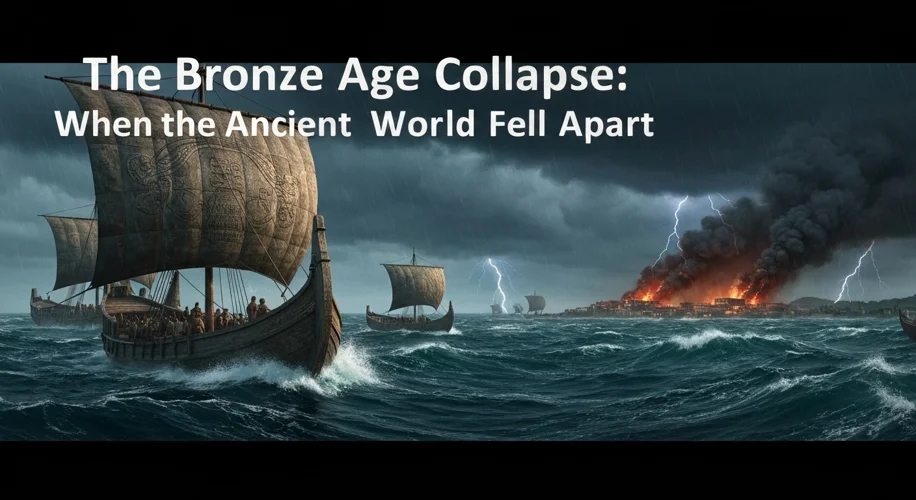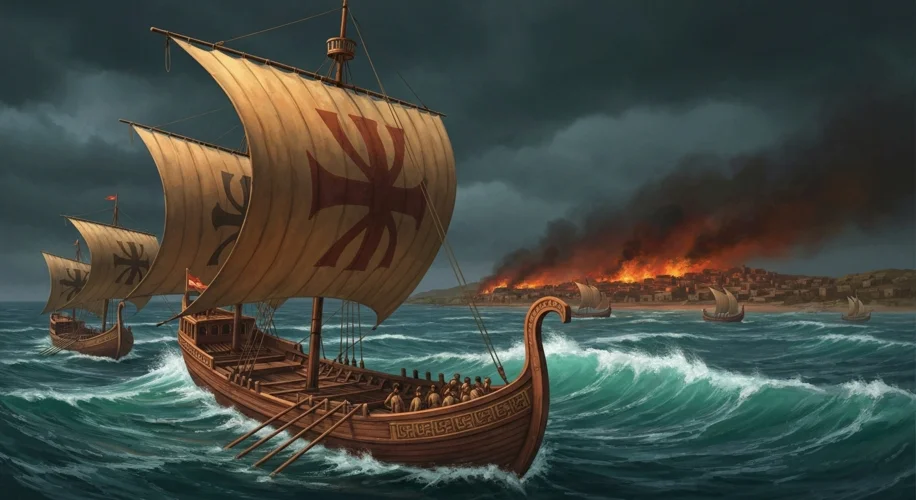Picture this scenario: a world teeming with mighty empires, sophisticated trade networks, and vibrant cities. This was the Late Bronze Age, roughly around 1200 BC, a period of unprecedented interconnectedness in the Eastern Mediterranean, Aegean, and Western Asia. Great civilizations like the Mycenaeans in Greece, the Hittites in Anatolia, the New Kingdom of Egypt, and kingdoms in the Levant and Mesopotamia were at their peak. They communicated through cuneiform letters, exchanged precious goods like tin and copper – the very ingredients of bronze – and engaged in complex diplomacy. It was a world that, for its time, felt remarkably stable and prosperous.
But then, almost like a slow-motion cataclysm, it began to unravel. The glittering cities crumbled, mighty armies vanished, and established trade routes dissolved into chaos. This period, known as the Bronze Age Collapse, is one of history’s most perplexing mysteries, a widespread societal breakdown that plunged vast regions into a ‘dark age’ and paved the way for the rise of the Iron Age.
What happened? The causes are still fiercely debated by historians and archaeologists, and the truth is likely a complex tapestry woven from multiple threads. One leading theory points to widespread invasions. Egyptian records speak of the ‘Sea Peoples,’ a confederation of maritime raiders who swept across the Mediterranean, attacking coastal cities and even threatening Egypt itself. Imagine the terror as these unknown fleets appeared on the horizon, their ships bristling with warriors, bringing fire and destruction to once-impregnable coastal settlements. Were they a single group, or a coalition of peoples displaced by other events?

Another compelling theory centers on environmental factors, particularly climate change. Evidence suggests a period of prolonged drought struck the region, leading to crop failures, famine, and internal unrest. For populations dependent on predictable rainfall and fertile land, such a shift would have been devastating. Societies that had grown large and complex, relying on surplus food production, would have been particularly vulnerable. Starvation breeds desperation, and desperation can fuel rebellion and migration.
Internal factors also played a significant role. The highly centralized nature of many Bronze Age kingdoms meant that a disruption at the top could have catastrophic ripple effects. If the ruling elite faltered, if succession disputes weakened governments, or if peasant revolts erupted due to heavy taxation or famine, the entire edifice of the state could collapse. The elaborate palaces and administrative systems, once symbols of power, could become liabilities, too complex and rigid to adapt to changing circumstances.
The archaeological record offers stark evidence of this dramatic shift. Cities like Ugarit in Syria were found destroyed and abandoned, their palaces and libraries still bearing the marks of fire. Mycenaean centers in Greece, like Mycenae and Tiryns, were sacked and fell into ruin. The Hittite capital, Hattusa, was burned and deserted. Egypt, though it managed to survive, was severely weakened and lost control over its overseas territories.
The impact of the Bronze Age Collapse was profound and long-lasting. The intricate web of international trade and diplomacy that characterized the Late Bronze Age was shattered. Literacy declined in many areas, and the grand architectural and artistic traditions of the previous era were largely lost. It marked the end of an era, ushering in a period of fragmentation and recovery that would eventually lead to the development of new political structures and cultural identities, including the rise of the Phoenicians, the Israelites, and the early Greek city-states.
What can we learn from this ancient upheaval? The Bronze Age Collapse serves as a powerful reminder of the fragility of complex societies. It highlights how interconnectedness, while fostering prosperity, can also create vulnerabilities. A cascade of interacting factors – environmental stress, external pressures, and internal weaknesses – can combine to bring down even the most powerful civilizations. It’s a cautionary tale from the distant past, echoing with relevance even today, urging us to consider the resilience of our own interconnected world in the face of challenges.

